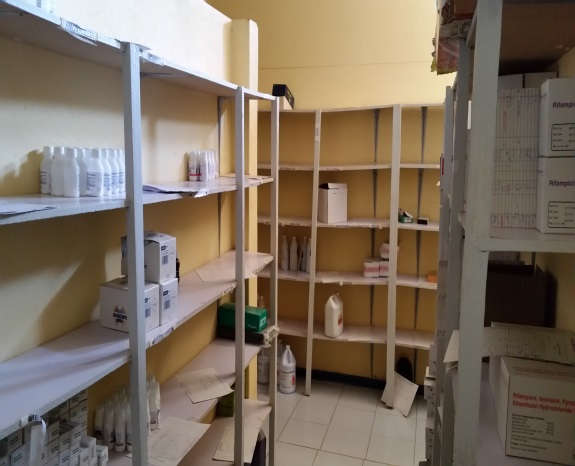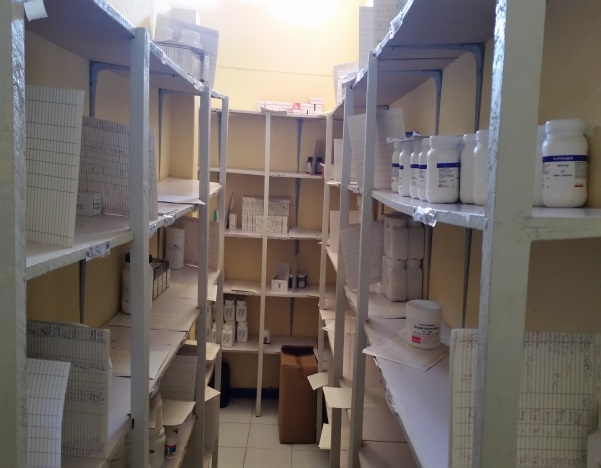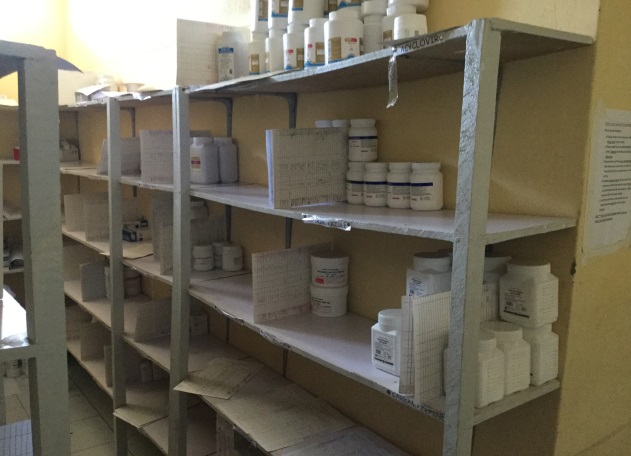BHA sends a big Thank You! to the St. Louis College of Pharmacy International Student Organization for dedicating their 2016 ISO Night fundraiser to helping the St. Albert’s Mission Hospital water system. The November event raised $2000 to help improve the St. Albert’s water system.
Cervical cancer prevention program
As of Dec. 31, 2016: St. Albert’s cervical cancer prevention program had screened nearly 5,100 women; identified more than 308 women with precancerous changes and 71 women with possible cervical cancer. The hospital had performed a total of 109 cryotherapy procedures. The program began Aug. 1, 2013.

Chadereka clinic

Chadereka clinic

Chadereka clinic

David Nelson clinic

David Nelson clinic

David Nelson clinic

Muzarabani clinic

Muzarabani clinic

Muzarabani clinic

Water System Improvements
The St. Albert’s Mission Hospital water system serves the entire mission community, a population of about 3,000.
In 2016, a sustained drought forced the hospital to take severe water-rationing steps. Surgeons had to scrub their hands prior to surgery using water poured from a bucket.
To cope with water shortages, Dr. Julia Musariri added eight fiberglass holding tanks, purchased with funds provided by donors in Australia. BHA donors provided nearly $6,600 for the purchase of the pipes, fittings and pump needed to bring raw water from the reservoir about 1.5 miles away.



Laboratory expansion
BHA sent St. Albert’s nearly $9,750 to pay for labor and materials needed to expand the hospital’s clinical laboratory.
The expansion provided addition space needed for processing medical specimens, for microscopy of malaria and TB; and to accommodate a new, larger fume hood and other refurbished equipment provided by the International Medical Equipment Corporation.






Meeting Critical Needs
BHA sent $5,000 to St. Albert’s to purchase essential medicines for patients. In August, the shelves in the St. Albert’s pharmacy were nearly empty (98% of the drugs available in Zimbabwe hospitals come from nongovernmental organizations).






Hunger relief
Donors contributed $1,800 to BHA for hunger relief at St. Albert’s. The hospital used the funds to replenish the food hampers that it provides to the malnourished. The hampers have a sack of maize meal, a sack of rice; a small bag of beans; a jar of peanut butter; a box of dried, ground small fish; and 2 liters of cooking oil. St. Albert’s staff shop for these items and assemble the hampers. About 20% of the district’s population were in need of food.
Support for the hungry is especially important for those taking AIDS drugs. The drugs must be consumed with food to avoid severe side effects. With no food, people will stop taking the drugs. When they then develop opportunistic infections, they will ask to go back on the drugs. But by then, it can be too late, or they have developed resistance to the drugs they had been taking. Zimbabwe has few alternative drug options when resistance develops.
Physician visits
BHA coordinated a March visit to St. Albert’s by two young pediatricians from Nationwide Children’s Hospital in Columbus.
2016 visit to Zimbabwe
Darrell Ward met Dr. Lowell Schnipper in Harare. Darrell, with help from first-time visitor Megan Jukich, hand-carried 20 new, surplus blood-pressure units. Dr. Julia Musariri met us at the airport with a duty-free certificate, enabling us to pass through customs with minimal delay. St. Albert’s shared the BP units with Karanda Mission Hospital.
In Harare
We attended meetings at the University of Zimbabwe and at Parirenyatwa Hospital.
Darrell and Megan traveled separately with Island Hospice nurses to the homes of clients receiving palliative care. All were in high-density areas of Harare.
At St. Albert’s
- Met with the manager of the St. Albert’s VIAC clinic to discuss the program’s needs and challenges.
- Reviewed efforts to cope with the drought and water rationing, the status of the water system and how BHA might help. We visited the reservoir and the farm project, which provides food for patients. Crops include rugare, maize, tomatoes, potatoes, bananas and a few small orange trees. Pigs, rabbits and chickens are raised for protein.
- Attended a remembrance of former hospital director Dr. Elizabeth Tarira, who died of recurrent breast cancer in 2012. Events included cancer prevention talks and songs by St. Albert’s secondary school choir and the pregnant mothers staying at the hospital’s maternity shelter.
- Hunger relief: Donors contributed $1,800 to BHA that was sent to the hospital for hunger relief for the most vulnerable. During this visit, we witnessed how this happens when an 89-year-old woman with pellagra arrived at the hospital. The hospital provided her with a hamper of basic foods: maze meal, beans, peanut butter, a can of dry ground small fish and cooking oil. Hospital staff purchase the items and assemble the hampers.
Hunger relief is especially important for those taking AIDS drugs, which must be used with food to avoid severe side effects. People with no food stop taking the drugs and can then develop resistance to the drugs they had been taking.


At Karanda Mission Hospital
We meet with Dr. Paul Thistle and staff of the Karanda cervical cancer prevention program, which is also supported by a three-year, $20,000 per year grant from the Sarita Kenedy East Foundation. The grant was obtained by Dr. Lowell Schnipper and is administered by BHA.
